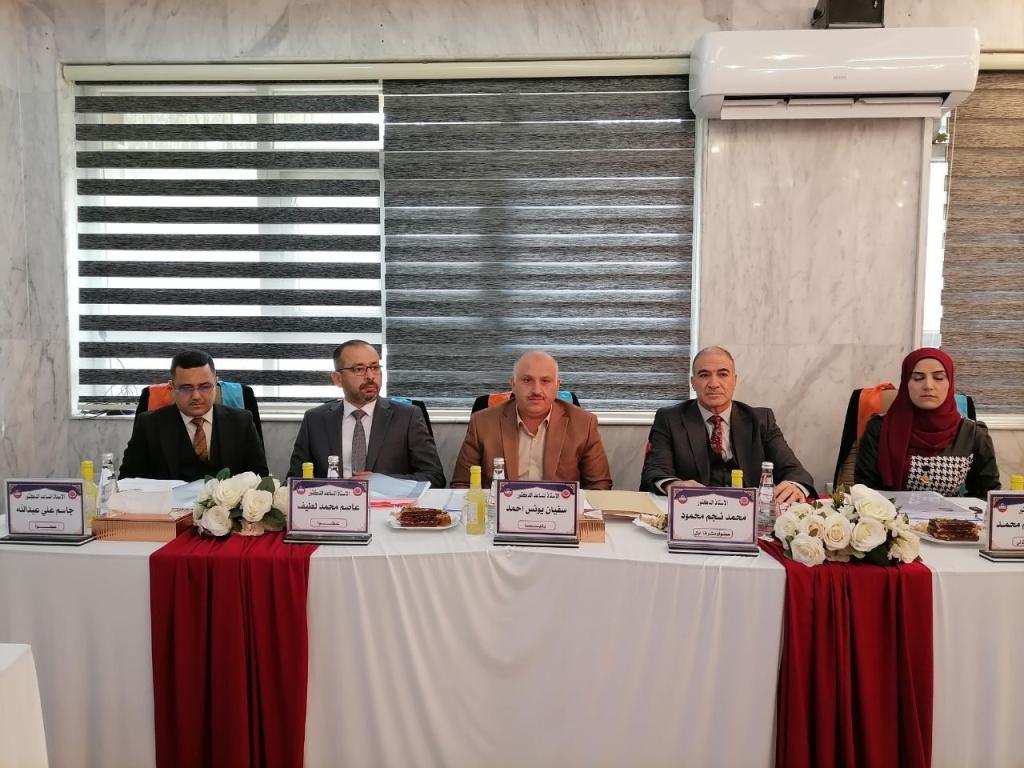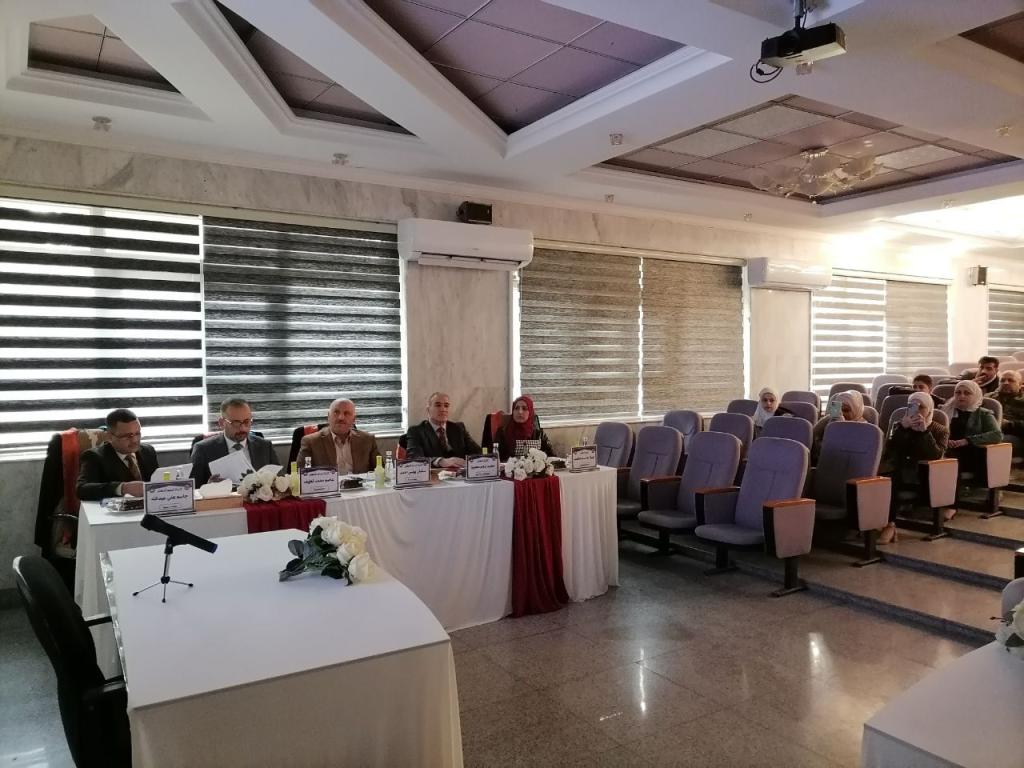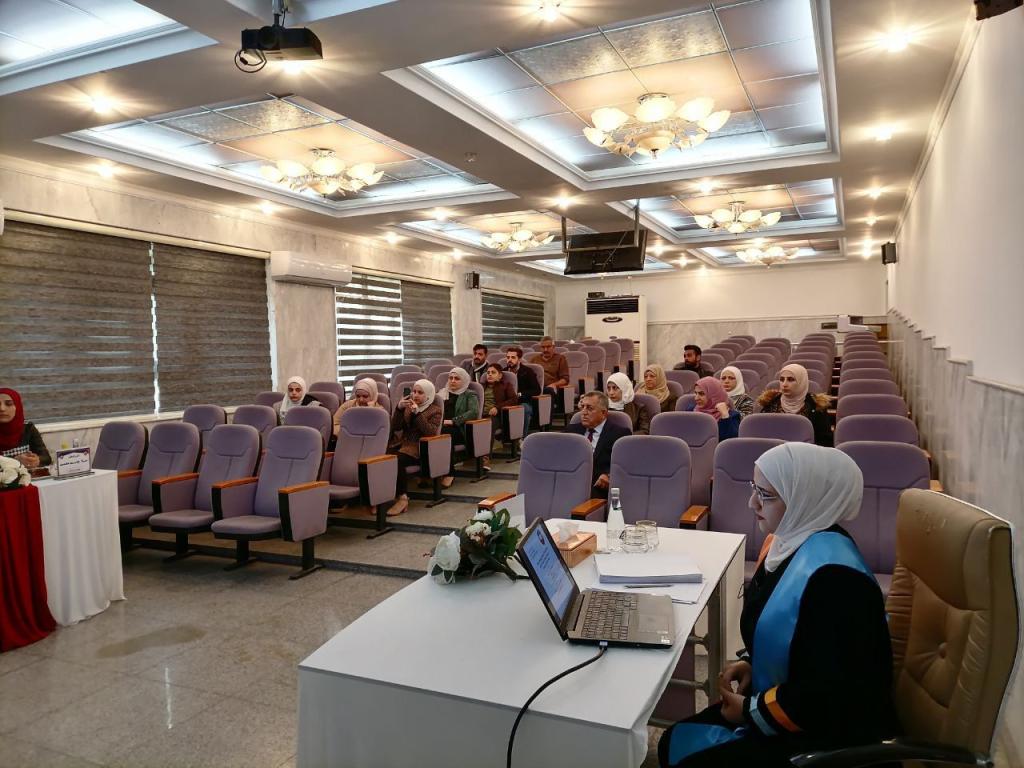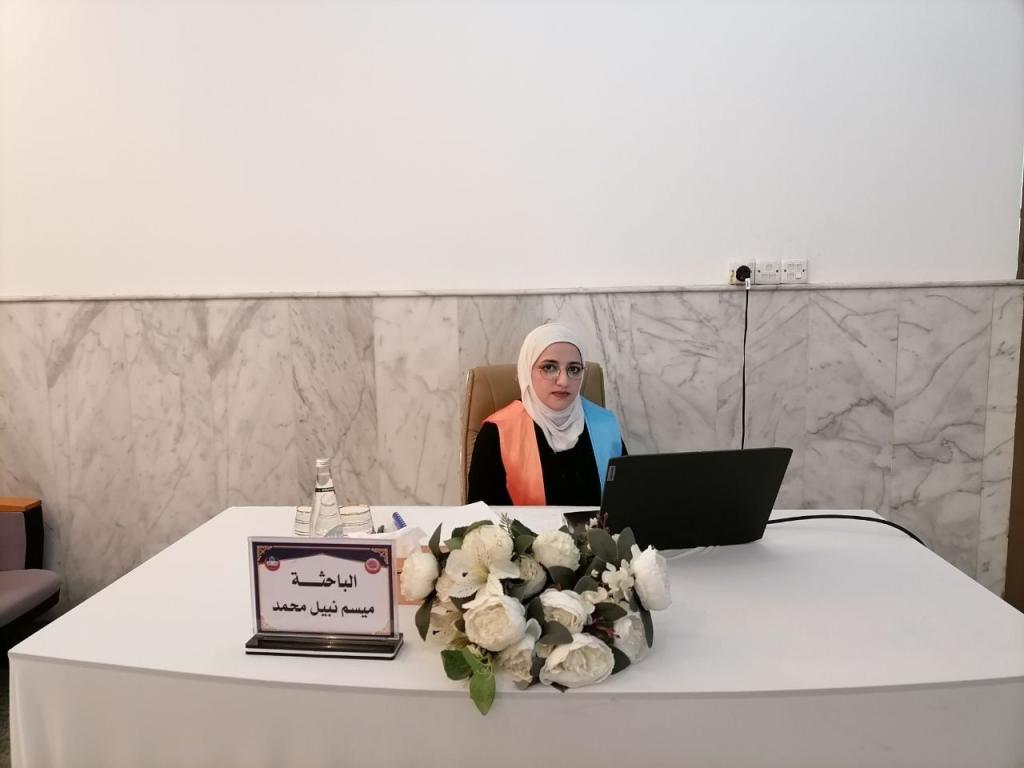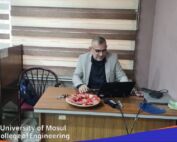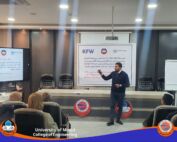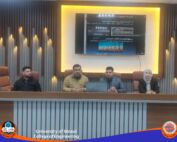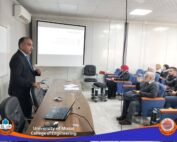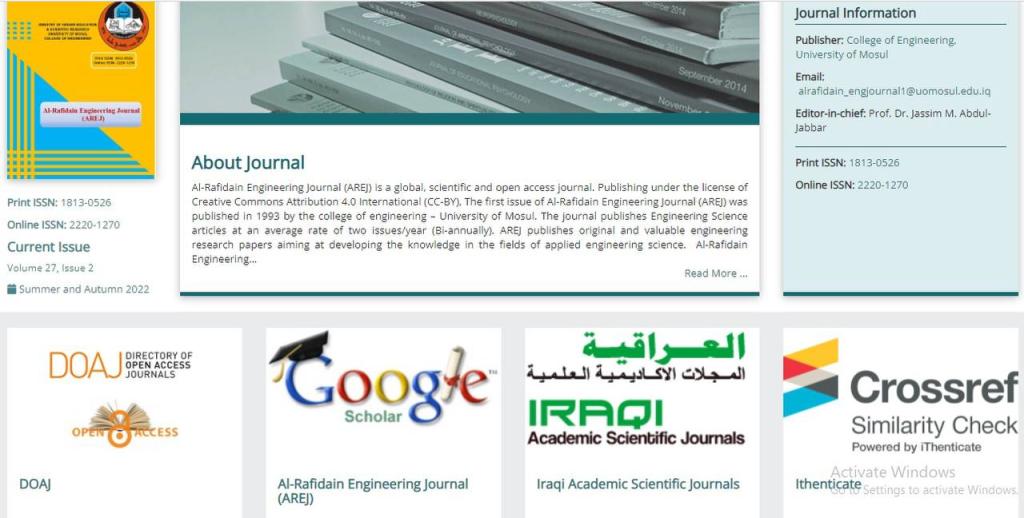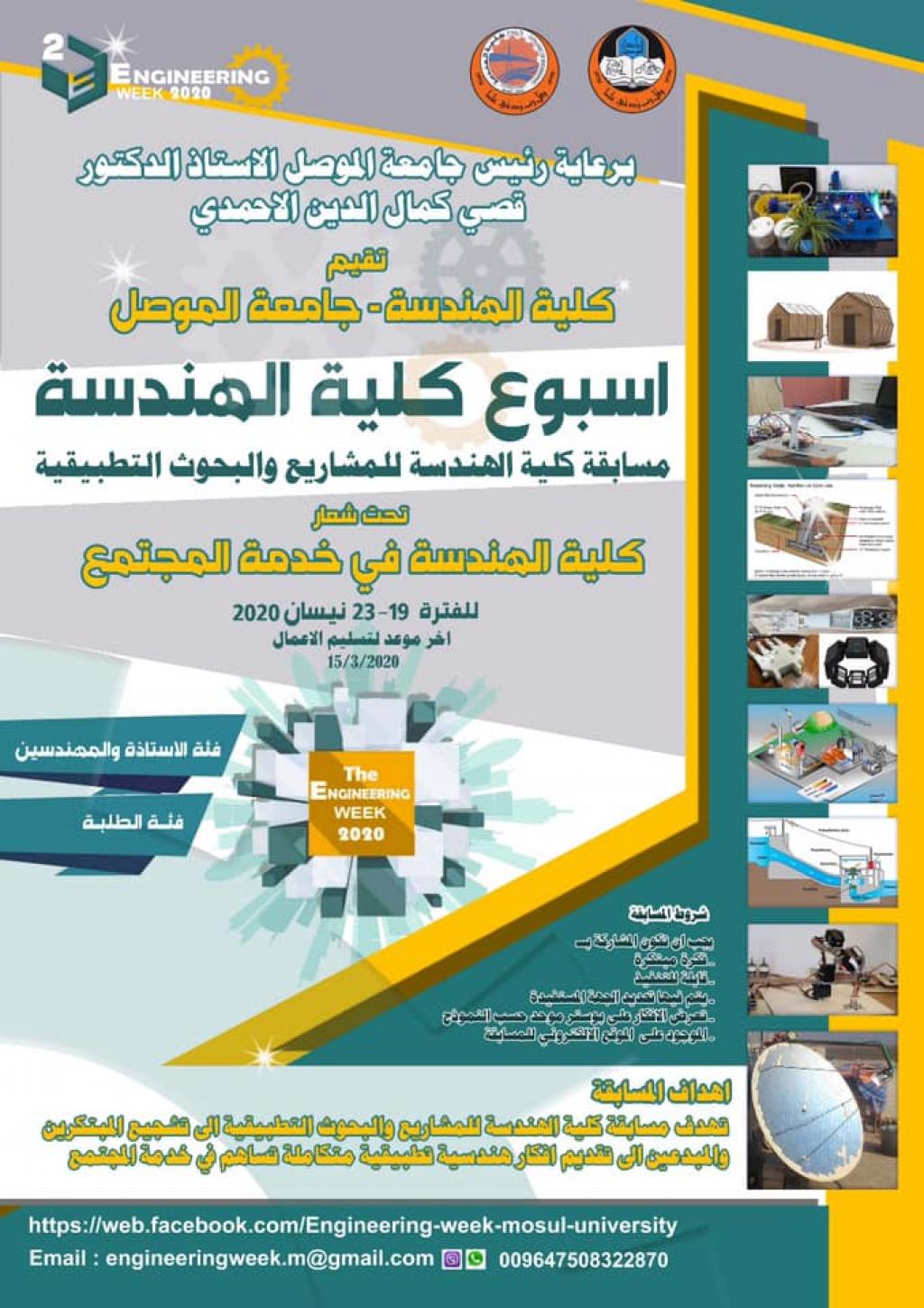18 December، 2022
Master Thesis on “Effect of Modeling Method of the Infill Panels on the Nonlinear Dynamic Response of RC Frame”
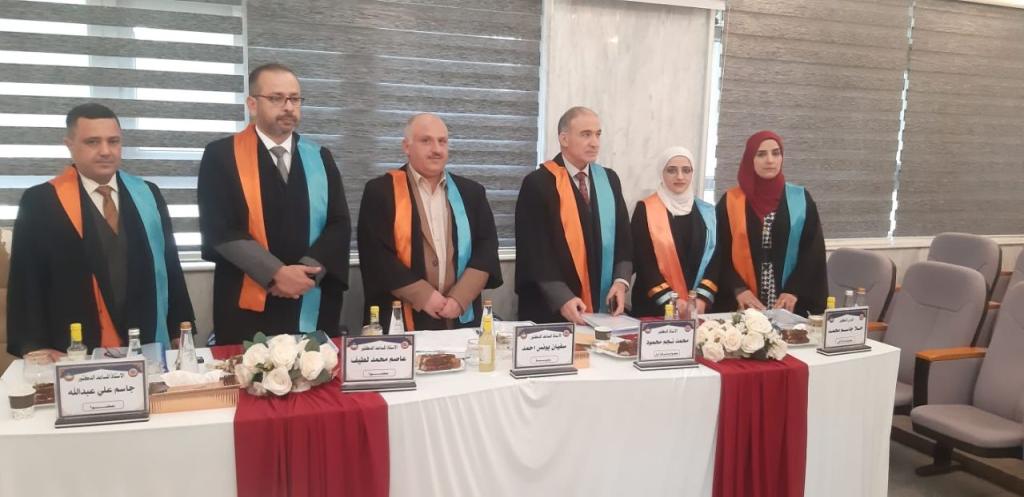
A Master thesis was discussed in Department of Civil Engineering / College of Engineering at University of Mosul entitled “Effect of Modeling Method of the Infill Panels on the Nonlinear Dynamic Response of RC Frame” submitted by (Maysam Nabeel Mohamad Ismail), Supervised By Prof. Dr. Mohammed Najim Mahmood and Dr. Halla Jasim Mohammed On Thursday, Dec. 15, 2022.The thesis involved a parametric study on the effects of using infill panels on the nonlinear time history analysis of a hypothetical reinforced concrete (RC) structures. The present work involved analyzing 8 storeys (G+7) Reinforced Concrete (RC) structure considering three different panel’s spans (3×3m, 3×5m, and 3×6m). The thesis included studying the effects of counting the infill panels on the dynamic response of these structures. The study also presented the effects of modelling the infill panels by an equivalent diagonal strut of either single, double, or triple strut with different locations of connection with the beams and columns. Each member of the structure (beams, columns and struts) is assigned a proper plastic hinge property, depending on the material properties, geometry of the section and reinforcement of each member. The predicted results are compared with that of bare frame and frames with full infill panels. The main emphasis of the present work is to find the easiest and most appropriate modelling of infill panels. The study also included investigating the effect of aspect ratio (L/h), where L is the span of the panel and h is its height, on determining the path and location of multiple diagonal struts that gives the most appropriate results. The structures were analyzed by using SAP2000, V23 software. Several parameters were studied in the time history analysis due to using different modeling of infill panels. These parameters included natural period, variation of roof acceleration, base shear, roof displacement and variation of drift ratio along building height.The presented results also included variation of axial force in selected struts, axial force and bending moment in a selected column. Plastic hinge formation at different time steps is also presented. The main important improvements that emerged from using the infill panels in the analysis are the noticeable reduction in the natural period, roof displacements, and storey drifts ratio, which led to reduction in the number of plastic hinge formation in the structures. The inclusion of infill panels in the analysis of these structures also caused an increase in the base shear for the three different spans compared with the bare frame.Additionally, it resulted in a decrease in the bending moment and an increase in axial force for the chosen columns. When the infill panels are included in the analysis by an equivalent diagonal strut, it was observed that the execution time of analysis decreases compared with the full infill model. This leads to the conclusion that employing an equivalent strut instead of a full infill panel to represent the infill panel is more efficient and produces economic outcomes in terms of the analysis’ execution time.

